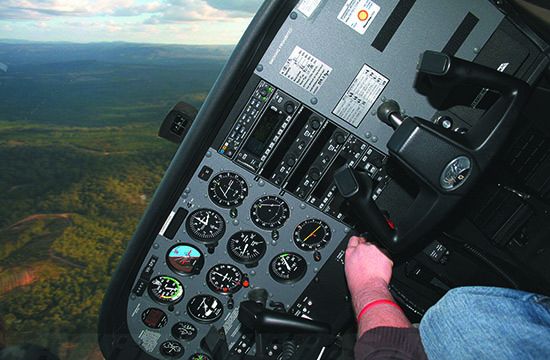
Somewhere, as you read this, an advanced pilot candidate is decrying the need to master the so-called commercial maneuvers. “You’ll never hear ATC call and say, ‘Give me a Lazy 8 for spacing,’” they might say. And they’d probably be right. The thing is, many of the maneuvers we must master to pass a practical test are often taught as what I call “checkride circus tricks”—something we learn for the sole purpose of demonstrating we can perform them.
Meanwhile, the FAA’s Aviation Instructor Handbook (FAA-H-8083-9B) tells us correlation is the highest level of learning, “associating what has been learned, understood, and applied with previous or subsequent learning.” But it seems flight instruction does not always take flight-skills preparation to the correlation level. Let’s look at what our instructors are really trying to teach us by correlating checkride maneuvers to real-world flying skills.
THE USUAL SUSPECTS
What we demonstrate on a practical test is included for obvious reasons: We learn stalls so we know how to recover from an inadvertent one. But the real lesson is deeper than that. Take, for example, the power-off stall.
The FAA’s private pilot airman certification standards publication (ACS) requires the candidate pilot to take certain steps, in an appropriate sequence, starting with clearing the area and selecting an appropriate altitude. But the most important part of the task is acknowledging the cues of an impending stall. The primary takeaway from this training is to avoid unexpected stalls, which requires detecting when the airplane is trending toward one, so we can recover (reduce the angle of attack, add power as needed and maintain control) before the stall occurs.
When I train stalls, I ask the pilot to tell me aloud what he/she feels and sees as the airplane nears the stall. Do you feel yourself pulling back on the controls (or trimming the nose up) more than normal? Do you have to add more rudder to maintain coordination? Do both the airspeed and vertical speed look normal for final approach, or is the speed lower or vertical speed less? Does the nose look higher than a normal landing? Is the noise level decreasing from reduced slipstream noise? These are the cues of an impending stall.
STEEP TURNS
For another example, I call the steep turn the ultimate proficiency maneuver. I do them a lot myself, and have my students (learners, in the current lexicon) fly them for more than just the usual reason. Even a degree or two change in pitch will result in an altitude “bust” (+/-100 feet) if it’s not detected and corrected. Even though it’s a visual maneuver, steep turns require an “integrated” approach—rapid scanning between outside and instrument references to maintain precision.
I take it a step further. One ACS criterion for completion is to maintain airspeed within 10 knots. To do so requires power input as you roll into the turn, and reduction as you roll out. After practicing this, I have the pilot fly it again without the power application, ignoring the airspeed tolerance this time. Since the airplane will decelerate under the increased G load in the turn, the steep turn becomes a very dynamic maneuver. Control forces necessary to hold altitude and bank change continually during this speed-fluid turn. To fly it precisely requires a rapid, integrated scan. I’ve found pilots having difficulty maintaining altitude and bank this way usually need remedial work on flying by reference to instruments. See also the sidebar on steep spirals, on page 19.
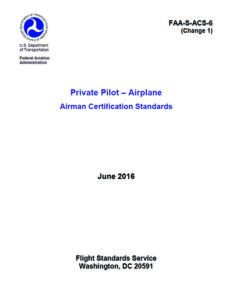
The pilot certification maneuvers taught have changed over time, naturally resulting in some controversy. For example, the private, recreational and sport pilot ACSes require a “full” stall before recovery. “Full stall” isn’t defined, but it’s generally interpreted as the first aerodynamic indication of a stall, actual buffeting or the nose pitching down. The commercial and airline transport pilot tests call for recovery at the first indication of a stall: the stall warning horn or buffet. Some criticize the advanced checkride for not requiring a full stall. But if you think about what a pilot is supposed to know—what it looks and feels like to be getting close to a stall—and what the pilot is supposed to do—act immediately at the very first indication of a stall—then it makes sense to introduce the worst-case scenario to new pilots but then fine-tune the response in more experienced ones. It invites discussion: How do we impress on less-experienced pilots the need to recover sooner rather than later in an inadvertent stall?
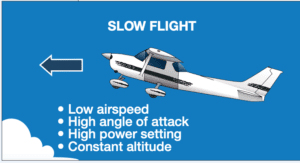
Another controversy: During slow-flight, the ACS requires maintaining altitude, heading and coordination at “an airspeed at which any further increase in angle of attack, increase in load factor, or reduction in power would result in stall warning.” In years past, “slow flight” was known as “flight at minimum controllable airspeed.” The maneuver was usually flown with the stall warning on continuously, at an airspeed at which an increase in angle of attack would cause a stall. “Old school” pilots tend to want it done the way they learned it. The FAA’s thinking, however, is that they don’t want to desensitize pilots to the need to recover if the stall warning horn sounds. If you think about the actual lessons taught in this airspeed regime, the extra few knots in indicated airspeed—old vs. new—doesn’t make a great deal of difference. For a possible better way to apply these lessons to real-world flying, see the sidebar on the following page.
SLOW FLIGHT
Slow-flight maneuvering may be the ultimate “checkride circus trick” to many but, like other checkride maneuvers, it teaches specific lessons. One objective for this maneuver says it all: “understanding of aerodynamics associated with slow flight in various airplane configurations, to include the relationship between angle of attack, airspeed, load factor, power setting, airplane weight and center of gravity, airplane attitude, and yaw effects.”
Slow flight has been described as practice of the control feel and response during the final seconds of flight and in the initial moment after liftoff. What it really teaches is the combined effects of low airflow on control response and effectiveness, and the increased propeller turning tendencies at high angles of attack…in other words, just after takeoff and just before landing. Think in those terms and it’s not quite as important whether the maneuver is flown just above stall warning, or just above the stall.
There’s some controversy about the current ACS airspeed tolerance for this maneuver. There may also be a better way to correlate the lessons of slow flight to day-to-day flying. See the sidebar above and on the following page for more.
GROUND REFERENCE
A turboprop-conversion Piper Malibu recently collided with a Cessna 172 when the Piper overshot the turn to the assigned runway at towered North Las Vegas Airport, killing all four aboard both airplanes. The PA-46 pilot may have misidentified the runway for which the flight was cleared. An earlier crash at Denver, Colorado, involved a Cirrus SR22 that flew a fast downwind-to-final turn and overshot its assigned runway, colliding with a Swearingen turboprop. Any number of crashes are blamed on the pilot’s response to overshooting the turn from base to final. All these are really the result of improper flight path management (FPM)—not making the airplane go where the pilot intended.
Ground reference maneuvers are designed to teach FPM. They’re flown close to the ground to simulate the traffic pattern where FPM is most critical and to provide a reference that makes it obvious whether the pilot’s flight path is turning out as planned. After the checkride, all those S-turns across a road and turns around a point may seem superfluous, but the accident history shows that we all could do a better job of FPM, learned through ground-reference maneuvers.
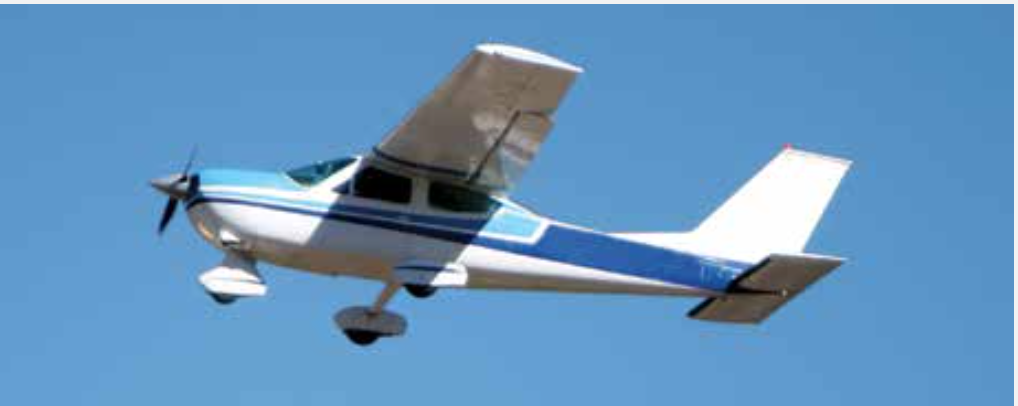
Might there be another way to teach the lessons of slow flight that correlate it even better to the operations it addresses? What about this?
- Begin in level flight at an altitude that permits completing the maneuver at no less than 1500 feet agl in singles, 3000 in twins.
- Configure the airplane for landing (flaps and gear, as applicable) and slow to the final approach speed.
- Reduce power and pitch to descend at about 500 fpm, setting up as you would for a power-off stall, except instead of stalling, your objective is to focus on control forces in this configuration.
- Next, reduce power and maintain pitch to slow to about five knots below reference speed. Evaluate the control feel and sensations at this speed and angle of attack. Make coordinated turns left and right, evaluating the control inputs required.
- Next, begin a go-around. Pitch and accelerate to VX and again evaluate the control feel. Clean up and climb at VX for an extended time. Then make coordinated turns left and right, again evaluating rudder requirements.
- Alternately, at the bottom of the maneuver, reduce throttle to idle and hold attitude until the wing stalls—complete the power-off stall maneuver. Recover into the extended VX climb.
This version of “slow flight” might help pilots better correlate the lessons of the maneuver to their routine flying. It more accurately presents the trouble spots of high angle of attack and high power conditions: transition from final approach to flare, getting too slow on final approach, the beginning of a go-around, obstacle departure, and coordinated turns at landing and takeoff speeds. It has the added benefit of lower power for much of the maneuver, reducing cylinder and oil temperatures that in some types limits the amount of time you can remain in slow flight.
Emphasis at all times is on rudder coordination, attitude and directional control. If the airplane has an angle of attack indicator, include the AoA display and correlate its indications to airspeeds throughout this maneuver.
POWER-OFF 180 LANDING
A maneuver from the commercial pilot syllabus is the power-off 180-degree accuracy approach and landing. On downwind, set idle power and glide to touch down on or no more than 200 feet beyond a predetermined spot. Emphasis is on airspeed and energy management, and correcting for wind.
How does this correlate to real-world flying? Although the chances of the powerplant failing on downwind are slight, if the engine quits higher up, you’ll eventually find yourself at pattern height as you glide down. In many airplanes, such as the heavier Beech Bonanzas I fly, you can’t make a 180-degree gliding turn from traffic pattern altitude, at least not with the landing gear down. You can do it gear down from about 1500 agl, or you can make the turn from about 1000 feet with the landing gear stowed. Practice this maneuver and you’ll define what’s called the “key” position: abeam a touchdown spot at an altitude from which you can glide to a landing on that spot.
In a real-world engine-out situation, your objective is to glide to this key position and altitude, and then complete the power-off 180. In the Bonanza, if I find myself at 1500 feet agl when I reach the key position, I know I can extend the gear and land on the wheels, if the landing surface makes that wise. If I’m lower than 1500 at the key, I will probably have to keep the gear up to make it to the landing surface. That’s certainly preferable to stalling on short final trying to stretch the glide, or coming up short on less hospitable terrain.
Another lesson from the power-off 180 relates to turning back to the runway if the engine quits. If it takes 1500 feet of altitude to turn 180 degrees with the gear down, and something more than that to make the final turn to align with the runway, or 1000 feet plus the extra turn amount if I leave the gear up, then I can better decide whether turning back is an option in the airplane I’m flying. Again, correlation.
VMCA DEMONSTRATION
A staple of multiengine training, the VMCA demonstration calls for chopping both throttles to idle while simultaneously lowering angle of attack at the first sign of loss of directional control during simulated failure of the critical engine. Again, a checkride circus trick. Except it’s not. At least as many piston-twin engine failure crashes happen well after the pilot correctly responds to an engine failure in flight as occur as the engine failure unfolds. The pilot maintains control through the onset of the emergency but then loses control maneuvering for a single-engine landing.
The correlative response that the VMCA demonstration hopes to make habit is that even if you think you are doing everything right, if you’re flying a twin on one engine and you cannot keep the nose pointed in the direction you want to go, immediately lower the nose as you reduce power on the good engine.
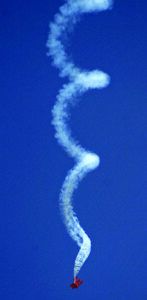
Most pilots learn and talk about spins, but not much about the equally deadly “graveyard spiral” tendency, which is merely a steep turn gone bad. If the pilot allows bank angle to increase into the overbanking tendency range (about 35-40 degrees in most light airplanes) and then does not give it the control input needed to maintain altitude, the nose drops, the airplane accelerates, the bank steepens and the descent rate increases precipitously. Uncorrected, the airplane either runs out of altitude or, if it was high enough, exceeds redline speed and breaks up in flight. The pilot may attempt to pull out but overstresses the airframe, another breakup scenario.
This is what often happens during attempted visual flight in IMC, in a thunderstorm penetration or with a loss of primary attitude instruments. It’s also a factor in the riskiest type of instrument maneuver—the circling portion of a circling approach—and in a “dark hole” night visual approach when only the runway lights are visible. In both these cases, the pilot’s focus is on the runway, outside the airplane, while in a turn close to the ground. If outside focus causes the pilot to let the bank angle get steep, and he/she doesn’t correct as needed, the rate of descent rapidly becomes critical.
All of these lessons are learned by correlating steep turns to routine flying.
LAZY 8
Since I brought it up…the commercial ACS is somewhat vague on the learning objectives for this maneuver, requiring the applicant to demonstrate understanding of the purpose of Lazy 8s, aerodynamics associated with the maneuver, performance and airspeed limitations, and phases of the maneuver. True, ATC isn’t going to request a Lazy 8 for spacing. So what correlation does this task have to more normal flying?
I learned two things when mastering this maneuver many years ago, and when re-learning it today: It’s as much a challenge to fly precisely with very small control inputs, as required in this maneuver, as it is to do more dynamic maneuvers like steep turns—Lazy 8s build FPM skills on a precision scale.
An airplane generally flies more precisely and smoothly if you use its trim and stability characteristics to guide it than it does if you try to force it to go where you want to go. Using natural trim stability makes every other flying task smoother and more accurate.
In short, the Lazy 8 teaches better precision and control, improving every aspect of your flying.
CORRELATIONS
These and other maneuvers required on practical tests present fundamental airplane control and flight-path management lessons that go beyond the obvious. That’s why I practice these maneuvers as often as I can. After all, they are considered the minimum skills required to exercise your pilot certificate.
Tom Turner is a CFII-MEI who frequently writes and lectures on aviation safety.




That looks like a 75 degrees of bank to me bro! Lol